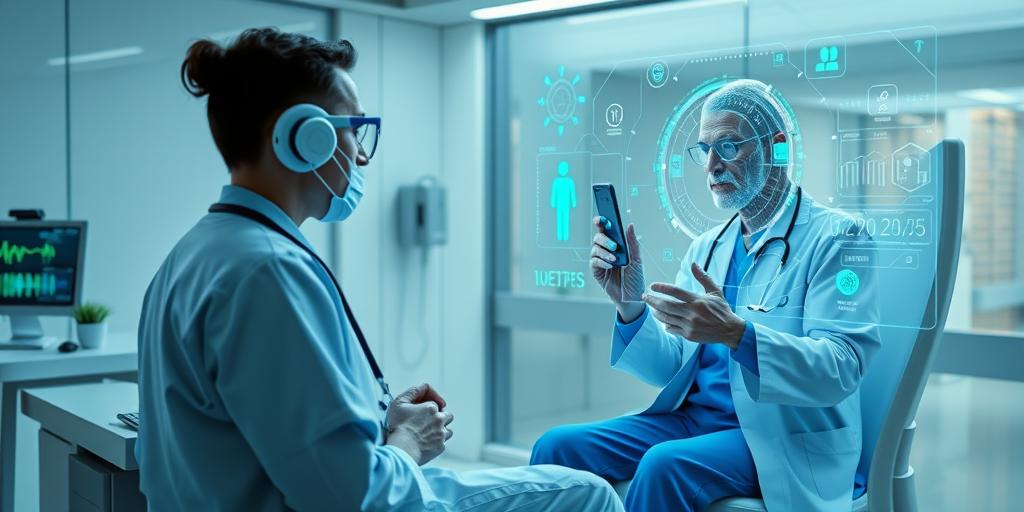The Rise of Telehealth and Remote Patient Monitoring (2025)
Telehealth and remote patient monitoring (RPM) are rapidly transforming healthcare delivery. By 2025, these technologies are projected to become even more integrated into standard medical practice, driven by advancements in technology, evolving patient expectations, and the ongoing need for efficient and accessible healthcare solutions.
What is Telehealth?
Telehealth encompasses the use of digital information and communication technologies to provide healthcare services remotely. This includes:
- Virtual Consultations: Video or phone appointments with healthcare providers.
- Remote Monitoring: Using devices to track vital signs and health data from home.
- Store-and-Forward: Securely sharing medical information (e.g., images, lab results) between providers.
- Mobile Health (mHealth): Utilizing mobile apps for health management and education.
The Growth of Remote Patient Monitoring (RPM)
RPM involves using devices and platforms to monitor patients’ health conditions outside of traditional clinical settings. Key components of RPM include:
- Wearable Sensors: Devices that track physiological data such as heart rate, blood pressure, and activity levels.
- Connected Devices: Medical devices (e.g., glucose meters, blood pressure cuffs) that transmit data to healthcare providers.
- Data Analytics: Software that analyzes collected data to identify trends, detect anomalies, and provide insights for personalized care.
- Alert Systems: Automated notifications to providers when patient data falls outside of predefined parameters.
Key Drivers of Telehealth and RPM Adoption
Several factors are contributing to the increased adoption of telehealth and RPM:
- Technological Advancements: Improved internet connectivity, sophisticated wearable devices, and user-friendly telehealth platforms.
- Increased Access to Care: Telehealth removes geographical barriers, making healthcare accessible to patients in rural or underserved areas.
- Cost Efficiency: RPM can reduce hospital readmissions, emergency room visits, and the overall cost of care by enabling proactive intervention.
- Aging Population: The growing number of elderly individuals with chronic conditions benefits from continuous monitoring and remote support.
- Pandemic-Driven Acceleration: The COVID-19 pandemic accelerated the adoption of telehealth due to the need for remote consultations and reduced in-person visits.
Benefits of Telehealth and RPM
- Improved Patient Outcomes: Continuous monitoring and timely intervention lead to better management of chronic conditions.
- Enhanced Patient Engagement: Patients become more active participants in their care through self-monitoring and remote communication.
- Greater Convenience: Telehealth eliminates the need for travel, reduces wait times, and offers flexibility in scheduling appointments.
- Better Resource Allocation: Healthcare providers can efficiently manage their time and resources by focusing on patients who require immediate attention.
- Reduced Hospital Readmissions: RPM enables early detection of potential health issues, preventing costly hospital readmissions.
Challenges and Considerations
Despite the numerous benefits, several challenges need to be addressed:
- Data Security and Privacy: Ensuring the confidentiality and security of patient data transmitted through telehealth platforms.
- Digital Literacy: Addressing the digital divide and providing support to patients who may not be comfortable with technology.
- Regulatory and Reimbursement Issues: Adapting healthcare policies and reimbursement models to accommodate telehealth services.
- Integration with Existing Systems: Seamlessly integrating telehealth platforms with electronic health records (EHRs) and other healthcare IT systems.
- Provider Training: Equipping healthcare providers with the skills and knowledge to effectively deliver telehealth services.
The Future of Telehealth and RPM
By 2025, telehealth and RPM are expected to be integral components of healthcare delivery. Future trends include:
- Artificial Intelligence (AI): AI-powered tools for data analysis, personalized care recommendations, and predictive analytics.
- Internet of Things (IoT): Integration of more connected devices and sensors for comprehensive health monitoring.
- Virtual Reality (VR) and Augmented Reality (AR): Use of VR and AR technologies for remote rehabilitation, pain management, and patient education.
- Expansion of Services: Telehealth expanding beyond primary care to include specialty services such as mental health, dermatology, and cardiology.
- Personalized Medicine: Telehealth and RPM enabling more personalized and precision-based healthcare interventions.
Conclusion
The rise of telehealth and remote patient monitoring represents a significant shift in healthcare delivery, offering numerous benefits to patients and providers alike. As technology continues to evolve and adoption rates increase, telehealth and RPM will play an increasingly important role in shaping the future of healthcare.
